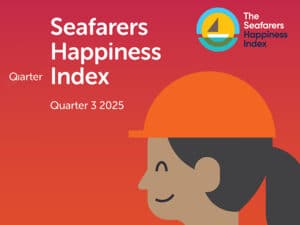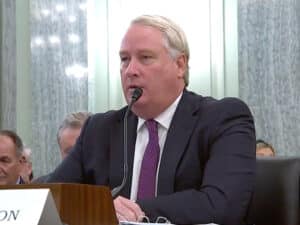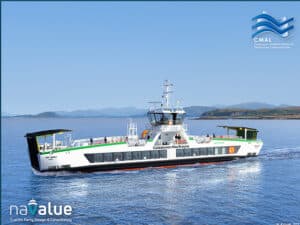
Q&A: Navigating U.S. offshore energy’s legal maze
Written by Heather Ervin
Jana Grauberger
As the U.S. offshore energy landscape rapidly evolves—with growing momentum in offshore wind and heightened regulatory scrutiny in oil and gas—developers are facing a complex legal environment shaped by shifting policies, environmental challenges, and financial risks. Marine Log spoke with Jana Grauberger, a partner at Liskow & Lewis in Houston, to unpack the key legal and regulatory issues impacting federal offshore leasing, permitting, decommissioning, and compliance for both traditional and renewable energy sectors.
Marine Log (ML): You’ve worked extensively in both traditional offshore oil and gas and, more recently, offshore wind. What are some of the key jurisdictional or regulatory challenges companies face when operating in federal waters?
Jana Grauberger (JG): The biggest challenge to federal offshore leasing and development, regardless of energy source, is having a clear and predictable regulatory environment. These are capital-intensive projects with a long timeline between winning a lease bid and producing hydrocarbons or converting wind to electricity and adding that power to the grid. For companies to make investments from a regulatory perspective, they need assurance that if they are awarded a lease, they will be able to develop it, that there is a feasible pathway for obtaining the necessary permits within a reasonable time frame, and that there is a degree of operational predictability in terms of how they will be regulated and the associated costs.
ML: The leasing process for offshore energy projects has become increasingly complex. What should operators know about how BOEM and BSEE are currently approaching lease management and compliance?
JG: Operators must understand the regulations and their regulators. A dialogue is essential. Often, when I am involved in enforcement cases, misunderstandings could have been avoided with better, more timely communication between regulators and regulated entities. Also, pay close attention to details. BOEM and BSEE have detailed regulations, guidance documents, forms, and policies, and they expect lessees and operators to know and follow their rules. Don’t assume that because it seems small and unimportant to you, it won’t matter to the regulator.
ML: Environmental regulations continue to evolve. How are recent shifts in federal policy—especially under changing administrations—impacting offshore development and permitting?
JG: I recently heard someone describe it as a ping pong game, where the ball is your lease, your project, or perhaps the entire scope of federal offshore leasing and development. Keeping up with the changes is challenging, but I believe overall industry and the government are doing a good job of focusing on keeping day-to-day permitting and operations going to the best of their abilities.
It’s also a time to stand up and be heard, which has led to a lot of industry involvement in legal challenges to leasing on environmental grounds—whether BOEM properly considered greenhouse gas emissions or potential impacts on Rice’s whales in deciding whether and where to allow oil and gas leasing. I think the shifts in federal policy require companies to pay attention more than before when a change in administration meant change around the edges and not wholesale change.
ML: Decommissioning obligations and financial assurance requirements have become a major issue in the Gulf. What are the current expectations from federal agencies, and how are operators adapting?
JG: Financial assurance requirements—what we call supplemental financial assurance – are mostly on hold right now as BOEM revises its new, never fully implemented regulations to presumably reduce the circumstances under which a lessee will be called upon to provide supplemental financial assurance. Decommissioning is here to stay. The Gulf is a mature basin; there is a significant amount of wells and infrastructure that need to be decommissioned, and that generally happens except when an operator becomes insolvent or otherwise defaults on its obligations, which then triggers liability among all the lease predecessors up the chain of title.
BSEE expects companies to timely perform decommissioning, and in the event of a bankruptcy or other default, they have a process in place that they now consistently follow, which involves issuing orders and enforcing against the defaulting party, and then issuing orders to all lease predecessors and requiring those predecessors on a set time frame to determine who will perform decommissioning and complete the work. It’s not efficient and requires significant coordination between companies and with BSEE, but it is the current system in place.
ML: With political dynamics playing a significant role in shaping offshore energy policy, how can developers best navigate uncertainty and remain in compliance while advancing long-term projects?
JG: That’s a tough question. I expect that companies have adjusted the factors they consider when making project investment decisions to reflect changing political realities. Depending on your risk tolerance, maybe you do less projects, spread the risk among more partners on each project, or diversify. I believe it’s also crucial to have an exit strategy if things really aren’t going your way and there’s no sign of change within a time frame you can withstand. It’s more critical now than ever for developers to stay informed and to work closely with in house and external legal counsel to keep up with the evolving landscape.
ML: You’ve also worked with clients navigating the early stages of offshore wind development. How different is that regulatory landscape compared to traditional oil and gas?
JG: Offshore wind is still a relatively new industry in the United States, and while there have been regulations on the books for years, there has been significant growth and learning regarding best practices for leasing, permitting, and construction as activity in leasing and development increases. We are also still navigating legal challenges to these projects, which can cause lengthy delays. There are similarities between federal offshore oil and gas leasing and offshore wind.
One key difference is that each offshore wind project requires independent environmental and other analyses, more so than oil and gas in the Gulf, for example, which require a lot of work and time to prepare and for government review and approval. A key lesson is that the regulatory process needs to be efficient to prevent the already long timeline for developing an offshore wind project from stretching even further, which could impact project viability.

![New floating dry dock gives Master Boat direct control over launch schedules and accelerating vessel deliveries. [Photo: Master Boat Builders]](https://www.marinelog.com/wp-content/uploads/2025/10/drytop-300x225.jpg)
![MSC Magnifica entering Palumbo Malta Shipyard. [Photo: MSC Cruises]](https://www.marinelog.com/wp-content/uploads/2025/10/MSC-Magnifica-entering-Palumbo-Malta-Shipyard-300x225.jpg)

